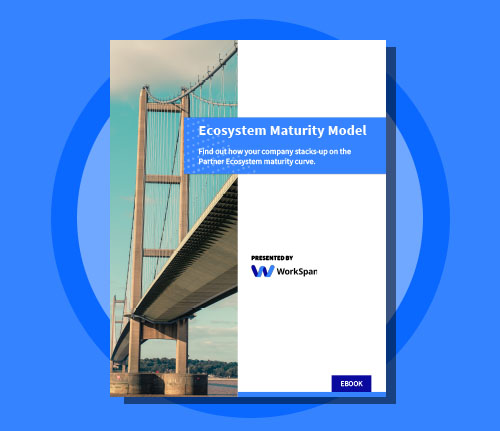
Let’s start with the fact - This is the Decade of Ecosystems, and over 84% of executives believe partner ecosystems are vital for their organization’s growth. Your customers are no longer looking for point products; they want end-to-end solutions. This demand has created an ultra-competitive environment.
What does this mean?
It’s simple and straightforward - You need broader capabilities supplemented with your partner ecosystems’ solutions to succeed.
But unfortunately, many companies are still using partner portals and CRMs that were built to manage reseller partner programs. The call of the hour is that they need to ramp up their joint partnerships with their ecosystem partners that’s not supported by their legacy partner portals.
The question arises - How to level up from your old partner portal or CRM? The answer:
Switch to a Modern Ecosystem Business Management Platform
Did you know that over 76% of global leaders believe that siloed business operations will be outdated within the next five years; partner ecosystems are critical to this transformation?
No surprise! Earlier, your company developed solutions and distributed them through resellers and channel partners. But, today, the scenario has transformed into joint partnerships. Instead of sticking to old ways focused on reseller partnerships, you need to switch to modern techniques that focus on joint partnerships like co-sell, co-build, co-market, and co-invest.
An Ecosystem Business management platform ensures that you and your ecosystem partners stay aligned on joint operations and work progress in one place. A reliable ecosystem management platform like WorkSpan offers all the tools and solutions that you need for effective co-selling, co-marketing, co-innovating, and co-investing with your ecosystem partners.
So, let’s look at the five vital capabilities that your ecosystem business management platform offers to help you outgrow your competition.
1. Multi-Party Ecosystem
If you've worked on re-seller models, you know that it is all managed on one partner portal or CRM, and each company had to log into it separately. This gave no scope for partners to connect. However, in a multi-party ecosystem, each partner can securely connect to a single network and access the partner programs.
So, an EBM enables an inter-connected network, avoiding silos. This means that your program partners can share objects, data, programs, solutions, plans, etc., with each other while maintaining the data model's integrity. Interesting, isn't it?
Earlier partners had to use spreadsheets, emails, etc., to keep track of operations but with an ecosystem management platform like WorkSpan, sharing tasks, messages, comments, etc., across all companies is more effortless.
With an EBM, companies are able to manage many different kinds of data elements and workflows with configurable object templates. This helps you manage business tasks and company-specific fields privately or with your ecosystem partners. Also, every partner in the ecosystem network can integrate data models with their internal systems and maintain vital areas like industry, region, and sales stage.
Wow, What more could you ask for?
2. Ecosystem Business Process
An EBM platform helps you streamline your business processes across the ecosystem through company-defined processes and cross-company workflows.
The good part? It becomes easier to collaborate with your partners located in different geographies.
Through these workflows, your company can work with your ecosystem partners with defined steps, states, actions, and approvals without being limited by boundaries or distance. You can easily track progress, work towards objectives, and execute program operations with your partners in a scalable, repeatable manner.
You can define policies, workflows, data, and integrations across the ecosystem, which also helps in automating operations based on your partners’ workflows and states. All motions and activities are synchronized and accessible to every partner. This lets each of your partners agree on the current state of operations, plan the following steps, and be accountable.
You can attach your company’s data with your partners’ workflows and use pre-designed solutions for joint partnerships like co-selling. Different companies have different business rules and sales processes. An ecosystem business management tool aligns sales operations of all partners together so that everyone knows about deal opportunities and status.
3. Ecosystem Data Hub
Data sharing is undoubtedly one of the major concerns when your partners work in a partner ecosystem. And ensuring that the shared data is transparent and access control is a significant ask from ecosystem partners.
How do you provide a data hub that is safe and secure for your ecosystem partners? With an EBM platform, this is possible with just one integration. A single integration can feed data to all your partners based on company-defined policies. Additionally, every partner can define its master data, including plans, accounts, opportunities, funds, solutions, etc.
What's fascinating is that you can build multiple integrations with a single object and protect data integrity. Further, you and your partners can automate creation, linking, and membership of objects.
Activities like vocabulary conversion can also occur between different companies' data flow.
For example, WorkSpan is integrated with Microsoft Partner Center and AWS ACE. So, each partner can share opportunities and referrals to Microsoft or AWS so that all data is synced across the partner ecosystem.
3. Ecosystem Access Control
Talking about access control, security breaches, poor reporting, and scalability issues are something that everyone’s faced or (at least) heard of. The reason for such incidents was that data access and sharing were done using spreadsheets manually.
An ecosystem management platform ensures all your partners join a shared object to prevent such mishaps in the partner ecosystem. You and all your ecosystem partners have access to shared data while private data stays secure.
Your company administrators can design policies to provide selective access to partners for company data. This means that you can manage access for all the users of your organization and partner users. There are multiple security policies to ensure that data stays safe. In addition, admins manage privacy policies and handling of private fields so that partners can access specific data elements within sales plans, joint opportunities, etc., without divulging personal data.
Field-level access depends on workflow stages, partners, and company-defined security policies. All users in a partner program can get the right level of access to various objects at the right time and stage as opportunities develop.
Sharing and data access make sure your partners can hide private data and do not send reports to the wrong place mistakenly. Such a system of intact data access policies and processes makes ecosystem business management secure and safe for you and your partners. Hence, one more reason for you to outgrow your competition with your partners is by offering them a smooth partner experience.
5. Ecosystem Intelligence
All partners have a single database for partnering activity, allowing live reporting based on the industry, solution, or region. These real-time QBR reports also enforce company security policies. So, your partners can analyze and report on crucial milestones related to the partner ecosystem but only have access to the information you’ve made available.
Why is this relevant?
Your metrics (such as sales pipeline, activities, funds, revenue, etc.) can be sorted and viewed without relying on any 3rd-party tools or software. These analytics are in real-time, so you and your ecosystem partners can track and forecast business operations.
Final Words
Let’s face it - using old and outdated techniques meant for reseller partnerships to manage your modern joint partnerships will hinder your growth. Instead, you and your partner teams need to use an effective ecosystem management platform for effective co-innovation and co-selling.
The capabilities discussed above will ensure you have the edge over your competitors to create scalable, problem-solving solutions for your customers and offer an excellent partner experience to your partners. So, are you ready to fuel your modern partnership engine with a robust EBM platform like WorkSpan?
Suggested Read:
Learn how to activate a winning partner ecosystem and dominate your category. We’ve developed an Ecosystem Maturity Model as the first step for you to become a world-class ecosystem-led organization. So grab hold of our guide and get rolling!

Heading
Heading 1
Heading 2
Heading 3
Heading 4
Heading 5
Heading 6
Lorem ipsum dolor sit amet, consectetur adipiscing elit, sed do eiusmod tempor incididunt ut labore et dolore magna aliqua. Ut enim ad minim veniam, quis nostrud exercitation ullamco laboris nisi ut aliquip ex ea commodo consequat. Duis aute irure dolor in reprehenderit in voluptate velit esse cillum dolore eu fugiat nulla pariatur.
Block quote
Ordered list
- Item 1
- Item 2
- Item 3
Unordered list
- Item A
- Item B
- Item C
Bold text
Emphasis
Superscript
Subscript





.png)